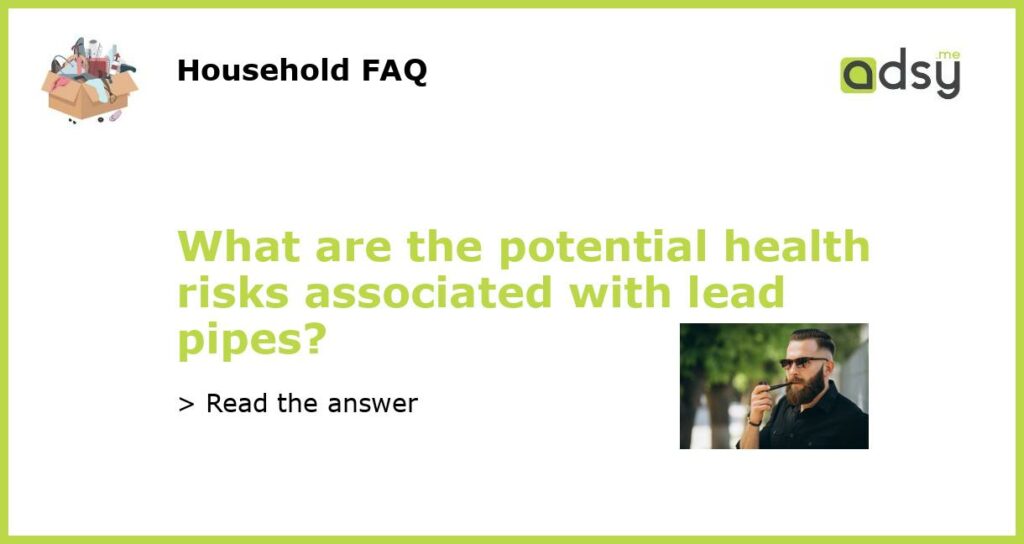Potential Health Risks Associated with Lead Pipes
Lead pipes have been a popular choice for plumbing systems for centuries due to their durability and ease of use. However, with growing concerns about lead exposure and its detrimental effects on human health, the use of lead pipes has come under scrutiny. In this article, we will explore the potential health risks associated with lead pipes and the steps you can take to mitigate these risks.
Understanding Lead Poisoning
Lead poisoning occurs when high levels of lead enter the bloodstream, leading to various health problems. One of the most common sources of lead exposure is through the consumption of contaminated water. This is especially true for homes with lead pipes or plumbing fixtures containing lead.
The Dangers of Lead in Drinking Water
Drinking water contaminated with lead can have severe health consequences, especially for vulnerable populations such as children and pregnant women. Even low levels of lead exposure can impact cognitive development and cause behavioral problems in children. In adults, lead poisoning can lead to kidney damage, high blood pressure, and reproductive issues.
The Role of Lead Pipes in Contaminating Water
Lead pipes can contaminate drinking water through corrosion or leaching. Over time, the interior of lead pipes can develop a coating called scale, which separates the water from the lead. However, if this scale is disrupted or damaged, the water can come into direct contact with the lead, increasing the risk of contamination. This is particularly common when there are changes in water chemistry, such as increased acidity or temperature fluctuations.
Steps to Mitigate the Risks
If you suspect your home has lead pipes or plumbing fixtures that may be contaminating your water supply, there are steps you can take to mitigate the risks:
- Get your water tested: Contact your local water authority or a certified laboratory to have your water tested for lead. This will help you determine the level of contamination, if any, and guide you in choosing the appropriate remediation measures.
- Flush your pipes: If you are concerned about possible lead contamination, it is recommended to flush your pipes each morning or after a period of non-use. Simply let the water run for a few minutes until it becomes cold or until you notice a change in color or taste.
- Consider water filtration: Depending on the level of lead contamination in your water, you may want to invest in a water filtration system that is specifically designed to remove lead. Look for products that are certified by organizations such as the National Sanitation Foundation (NSF).
- Replace lead pipes and fixtures: If you have confirmed the presence of lead pipes or fixtures, it is advisable to replace them with safer alternatives, such as copper or plastic pipes. Consult a professional plumber to ensure the proper installation and removal of the old pipes.
- Stay informed: Keep yourself updated on the latest research and guidelines regarding lead exposure and water contamination. The Environmental Protection Agency (EPA) and the Centers for Disease Control and Prevention (CDC) provide valuable information and resources on this topic.
By taking these preventative measures, you can reduce the risk of lead exposure and protect the health of you and your family. Remember, early detection and proactive action are crucial in mitigating the potential health risks associated with lead pipes.






